Metropolitan Tikhon presides at 75th Anniversary of Our Lady of Kazan Church, Sea Cliff, NY
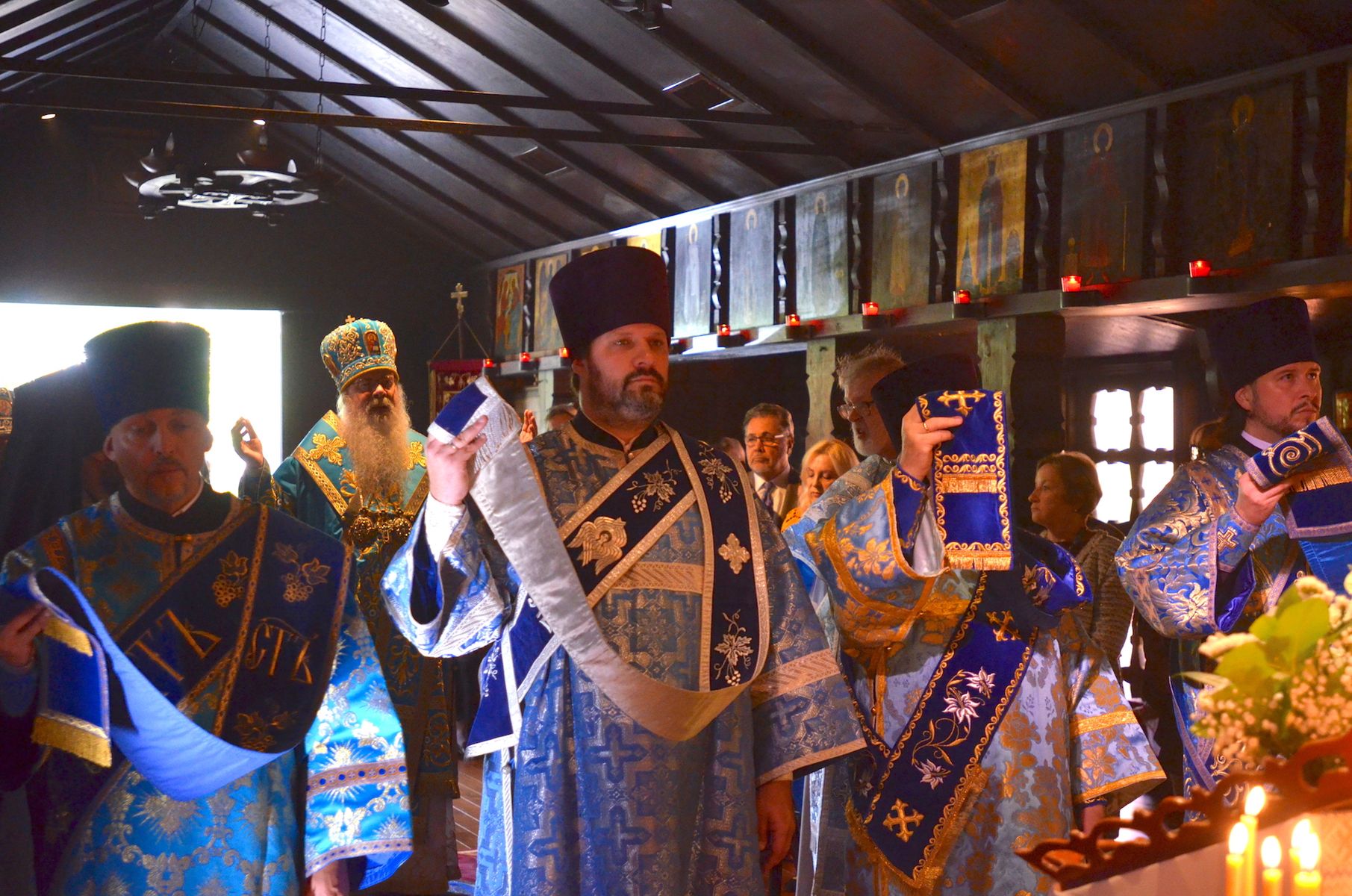
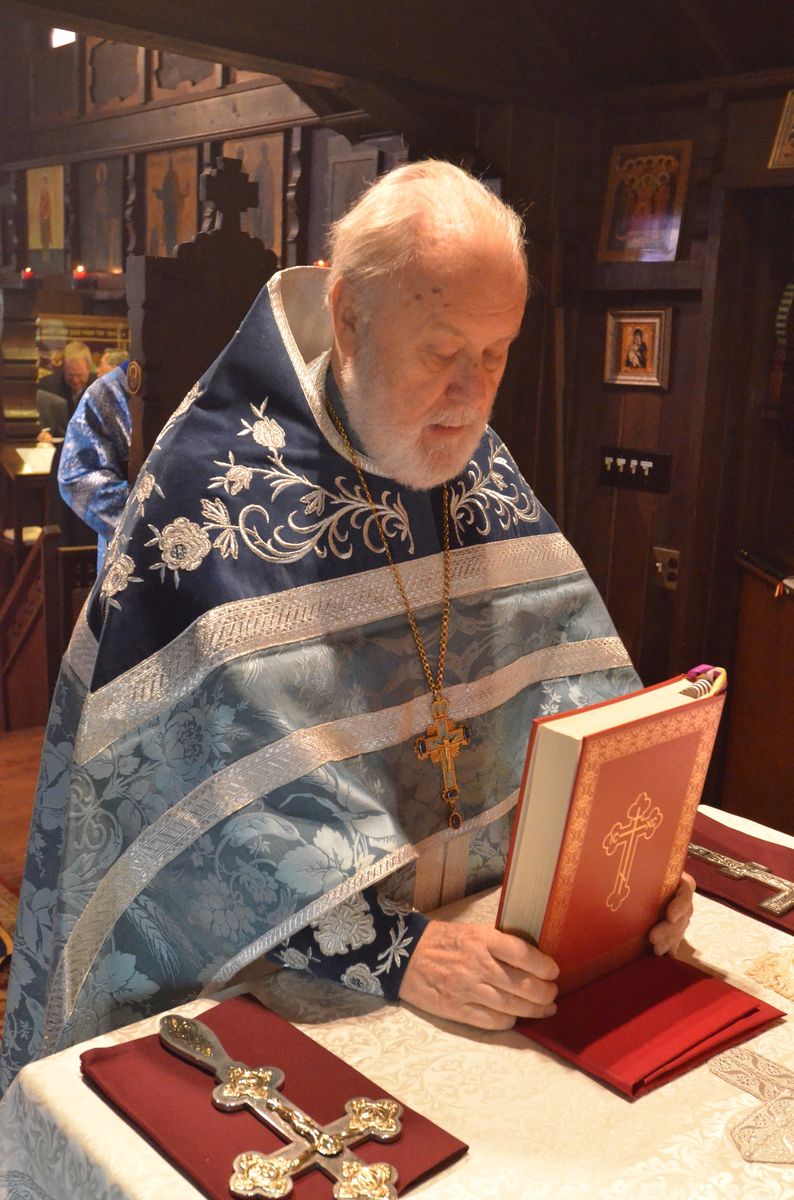
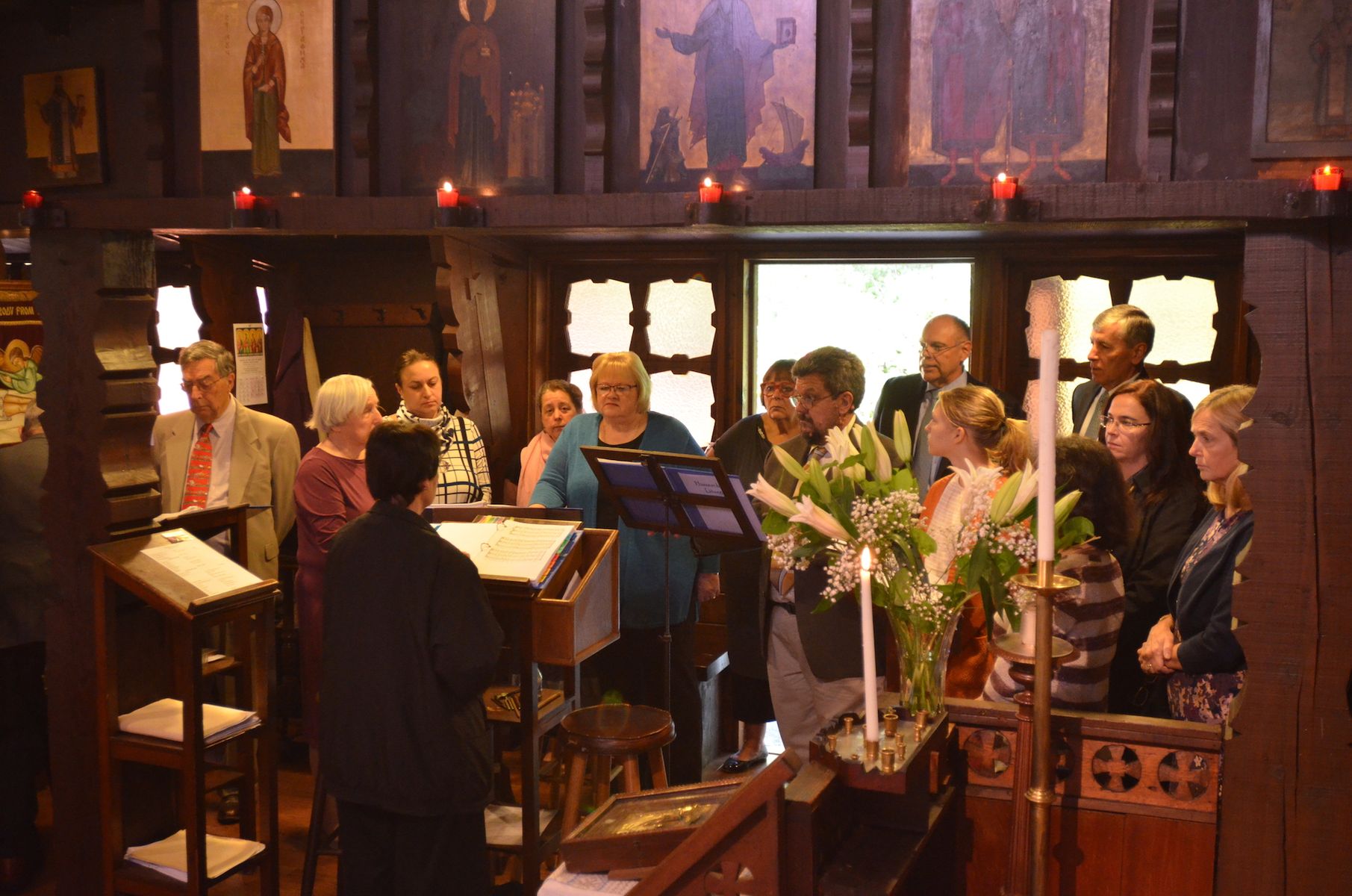
On Sunday, October 22, 2017, His Beatitude, Metropolitan Tikhon and His Eminence, Archbishop Michael concelebrated the Divine Liturgy at Our Lady of Kazan Church, Sea Cliff, NY, marking the parish’s 75th Anniversary.
Protopresbyter Leonid Kishkovsky, Rector, and the parish faithful welcomed the hierarchs upon their arrival. During the Liturgy, Father Leonid was awarded the miter in recognition of his many years of service to the parish and the Orthodox Church in America. A Synodal Gramota was presented to Father Leonid, the Parish Council and the faithful of Our Lady of Kazan Church at the conclusion of the Liturgy. Also receiving a Synodal Gramota was Archpriest John Bartholomew, who is attached to the parish, on the occasion of the 30th anniversary of his ordination to the priesthood.

OCA clergy concelebrating with the hierarchs included, in addition to Fathers Leonid and John, Archdeacon Joseph Matusiak, Protodeacon Michael Wusylko, and Deacon Stephen Karlgut. Also concelebrating were Father Photius [Oulanov], Protodeacon Vadim Gan, and Protodeacon Eugene Kallaur from the Russian Orthodox Church Outside of Russia.
A festive dinner followed services.
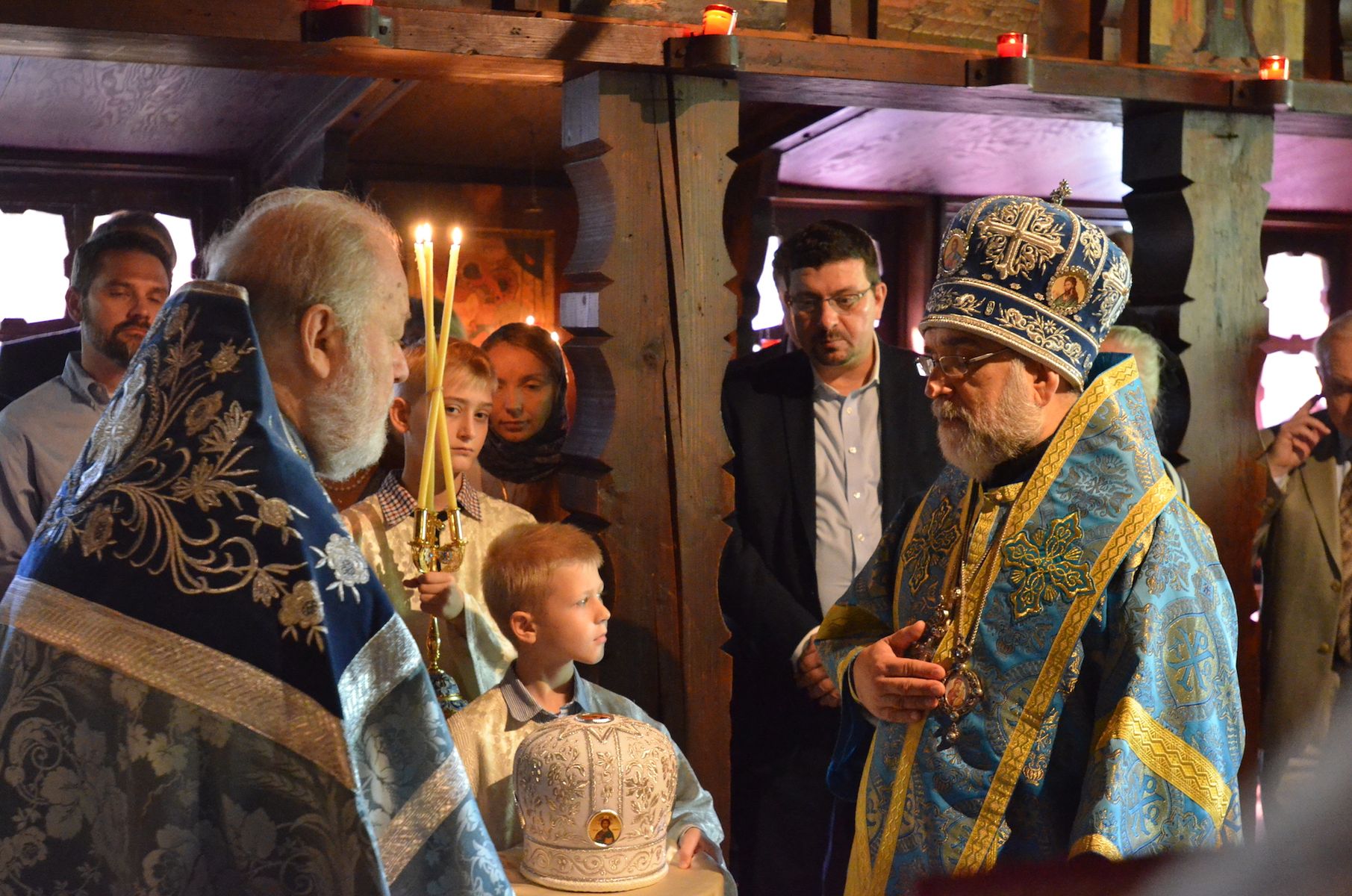
The history of the Church of Our Lady of Kazan is closely bound to the history and development of the Russian community in Sea Cliff and the surrounding area. In the 1920s this community numbered only two or three families, but by the 1960s it had grown to about two hundred families and was served by the Church of Our Lady of Kazan and two other Russian Orthodox churches. For the Church of Our Lady of Kazan this growth was reflected in the church building itself, which began as a simple chapel in a small garage and has been transformed into a structure with dignified lines and stately appearance.
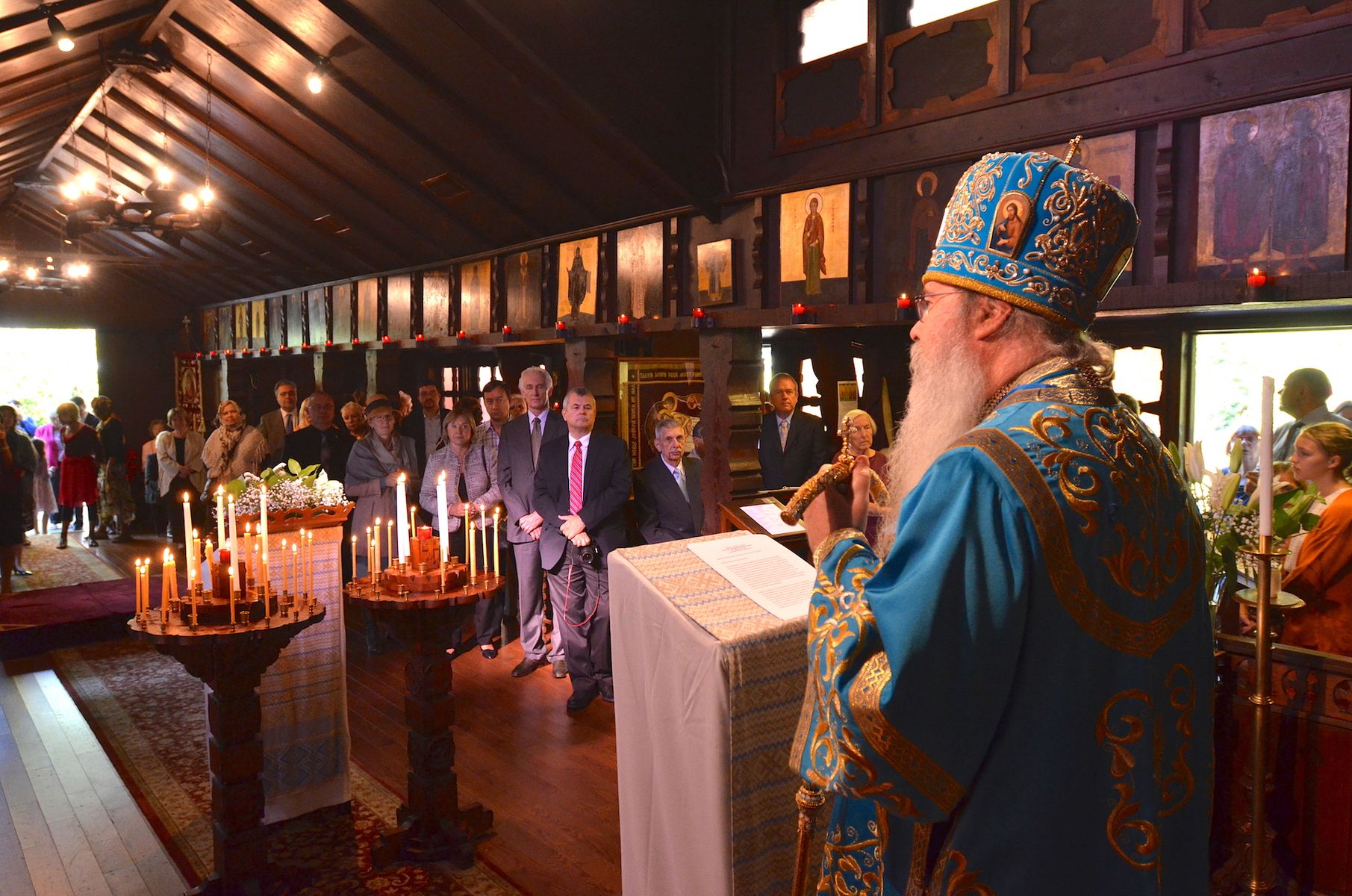
In the 1930s Sea Cliff was a popular place to spend the summers. Among the vacationers there were Russian families to be found. Some of them came to love the village. Since houses were relatively inexpensive then, the first Russian families made the decision to settle in Sea Cliff. The real growth of the community began in the 1940s, especially after the World War.
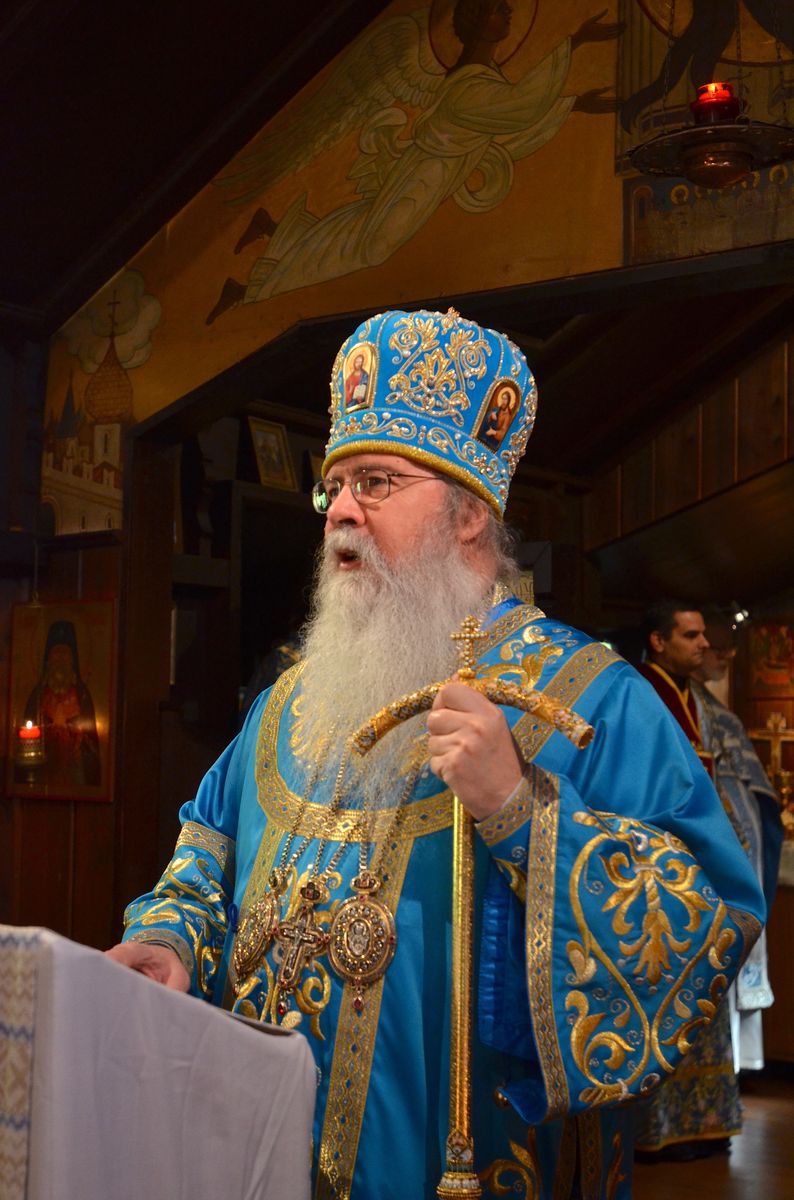
The first Russian families who settled in Sea Cliff attended services in the nearest Orthodox churches (Whitestone and East Meadow). Since these churches were more than ten miles from Sea Cliff, the local Orthodox residents decided it would be best to establish their own parish, especially since war-time gas rationing made automobile travel more difficult. A petition was addressed to His Eminence, Metropolitan Theophilus, who proposed that interested persons hold an organizational meeting. In January 1942 such a meeting was held under the chairmanship of Father Alexander Tzuglevich, a priest of the Holy Protection Cathedral in New York City, who represented Metropolitan Theophilus. The meeting, which took place in the house of Ivan L. Pouschine, was attended by all the Orthodox residents of Sea Cliff, Glen Cove, Locust Valley, Great Neck, and Little Neck. In April 1942 permission was granted to open a chapel, which was to be temporarily serviced by clergy from the New York City Cathedral. Boris I. Riaboff made available a garage for the chapel and agreed to sell a portion of his estate to the church community.
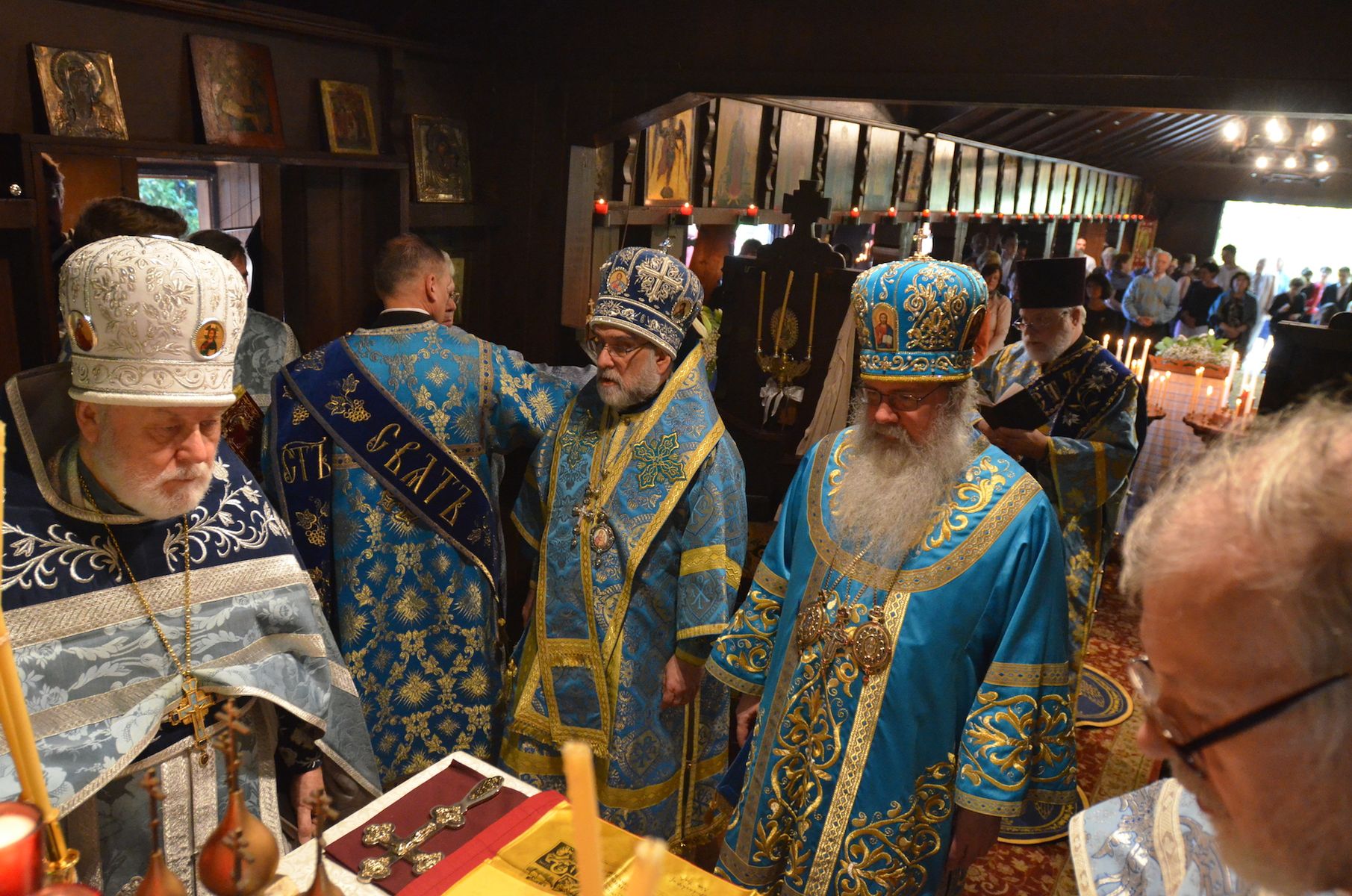
While the garage was being transformed into a chapel, the choir started to organize and ladies of the community also began diligent work to sew vestments and to acquire the necessary church vessels and furnishings. Icons were painted, banners were embroidered, the holy plashchanitsa was made. On Saturday, August 8, 1942, the little church was dedicated. The first Divine Liturgy was celebrated by Father Basil Moussin-Pushkin on the following day.
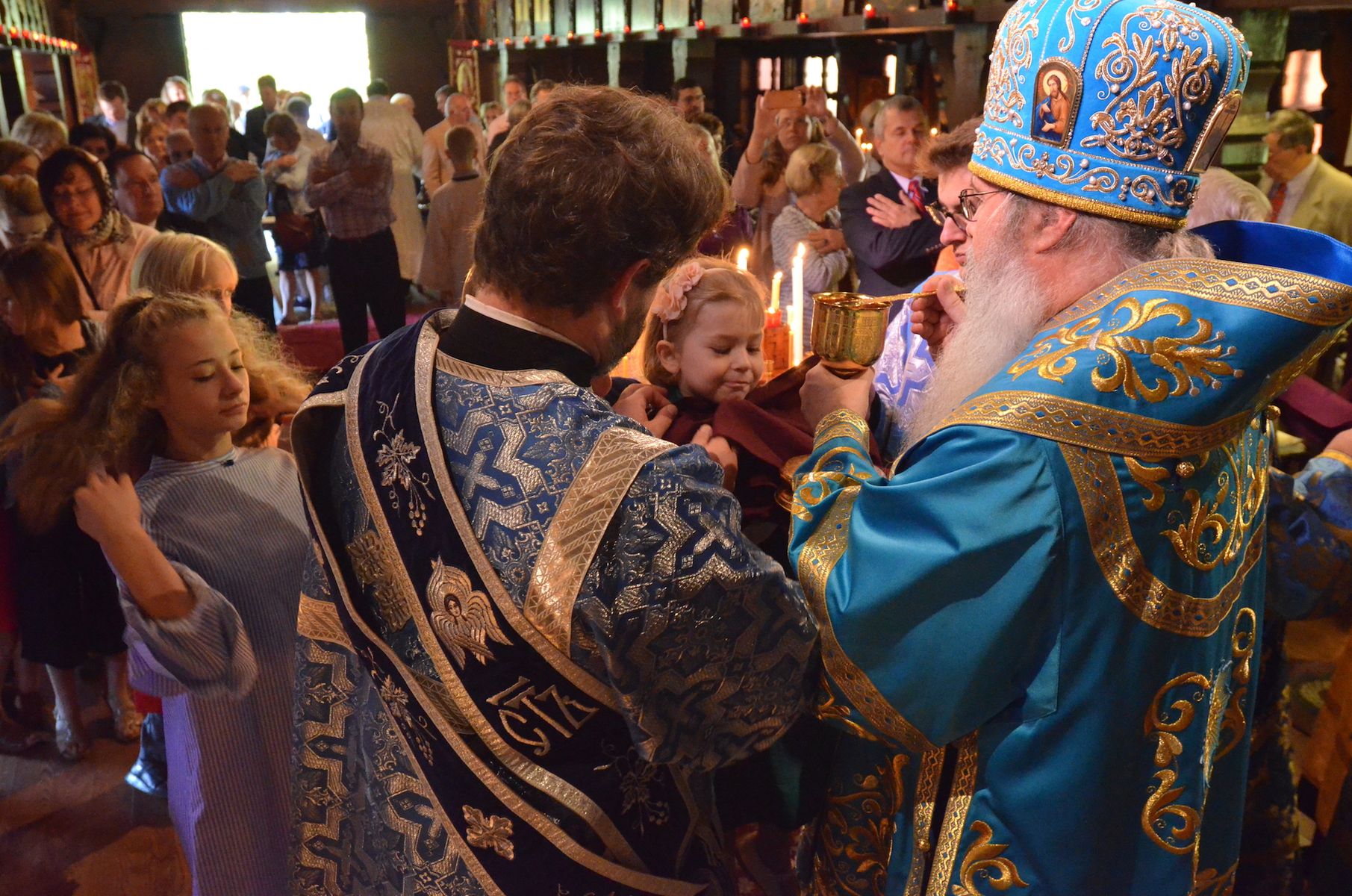
The parish was incorporated on November 30, 1942. Listed in the charter as the first trustees were Father Basil Moussin-Pushkin, Rector, and Theodore Lodijensky, George Guilsher, Boris Riaboff, Ivan L. Pouschine, Basil Wadkovsky, and Peter Fekula. These persons may justly be considered the founders of the parish in Sea Cliff.
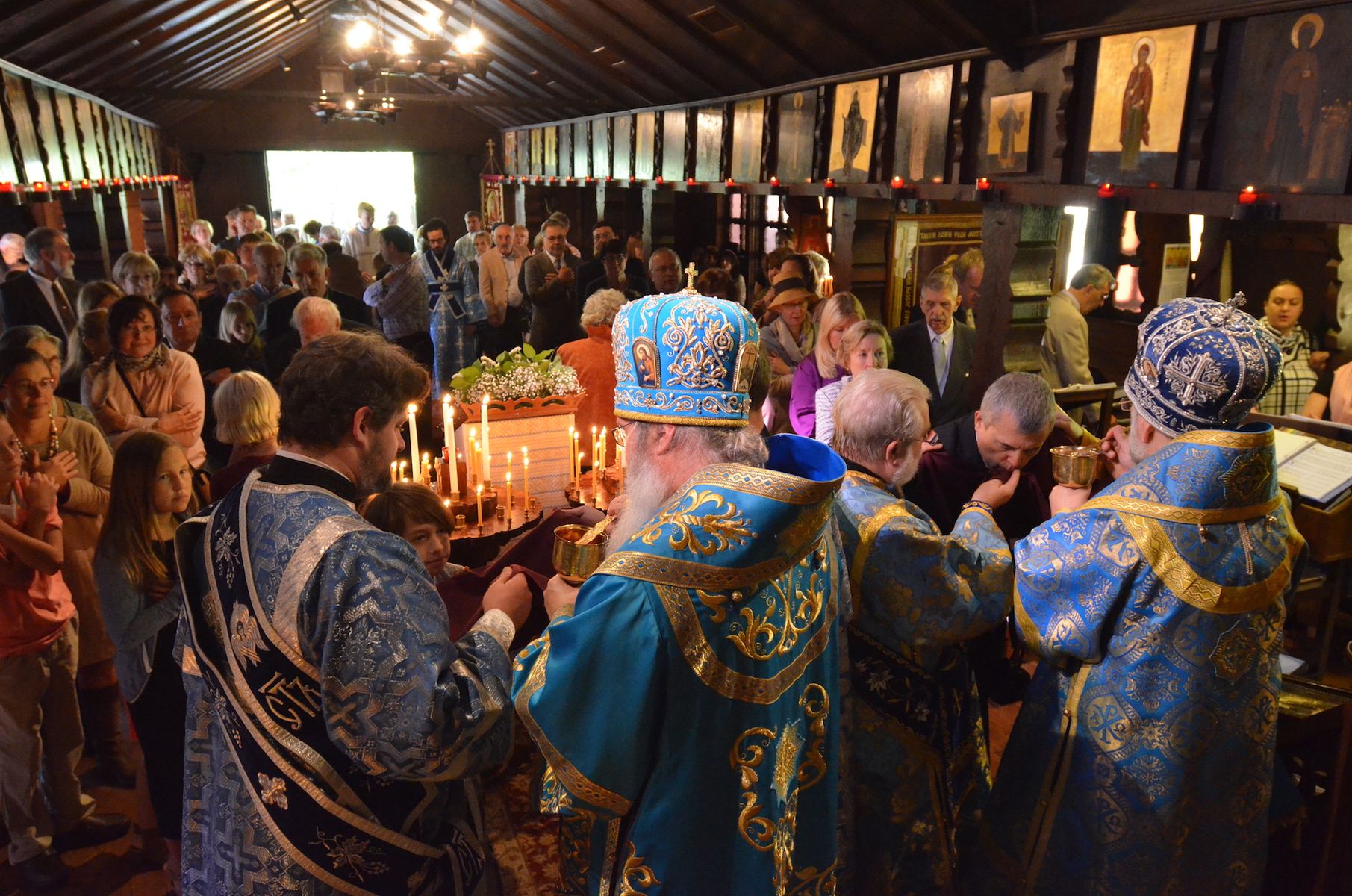
Gradually, the number of parishioners grew and the church became noticeably crowded at Sunday services. The first expansion of the building was undertaken in 1945. This project was made possible through the efforts of the Rotast family and the generous donations of the parishioners. Through the years the church has undergone additional development, including an expansion of the sanctuary and altar. In 1969 the last extension was completed and the carved entrance gate with icons of Christ and the Theotokos was erected.
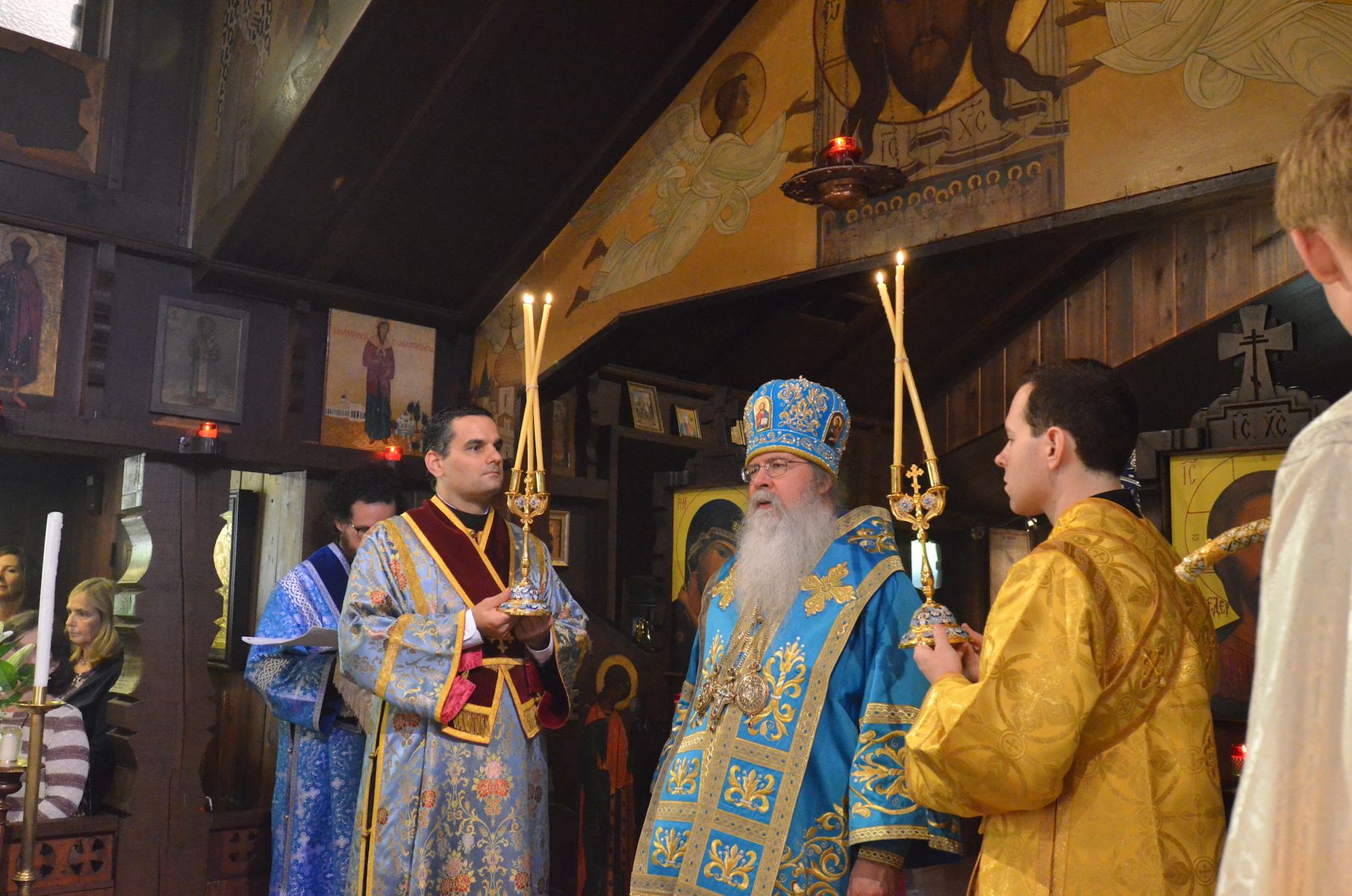
From 1948 to 1974 the beloved priest of the parish was Father Alexis Yonov, who came to the US with his family as a refugee from war-torn Europe. Father Alexis served also as Secretary of the Holy Synod of the Russian Orthodox Metropolia of North America. It was during his years as the parish priest that the last expansion of the church building took place and the rectory was built.

On August 9, 1977, exactly 35 years after the celebration of the first Divine Liturgy in the newly consecrated church, His Grace, Bishop Theodosius [Lazor] brought as a gift to the Church of Our Lady of Kazan a relic of Saint Herman of Alaska, the first Orthodox saint to live, die, and achieve canonization in America. August 9 is this also remembered as the day of the canonization of Saint Herman in 1970. This “coincidence” of dates has special significance because it reminds us that the history of our parish should not be seen in isolation, but in the context of the history of the Orthodox Church in America.
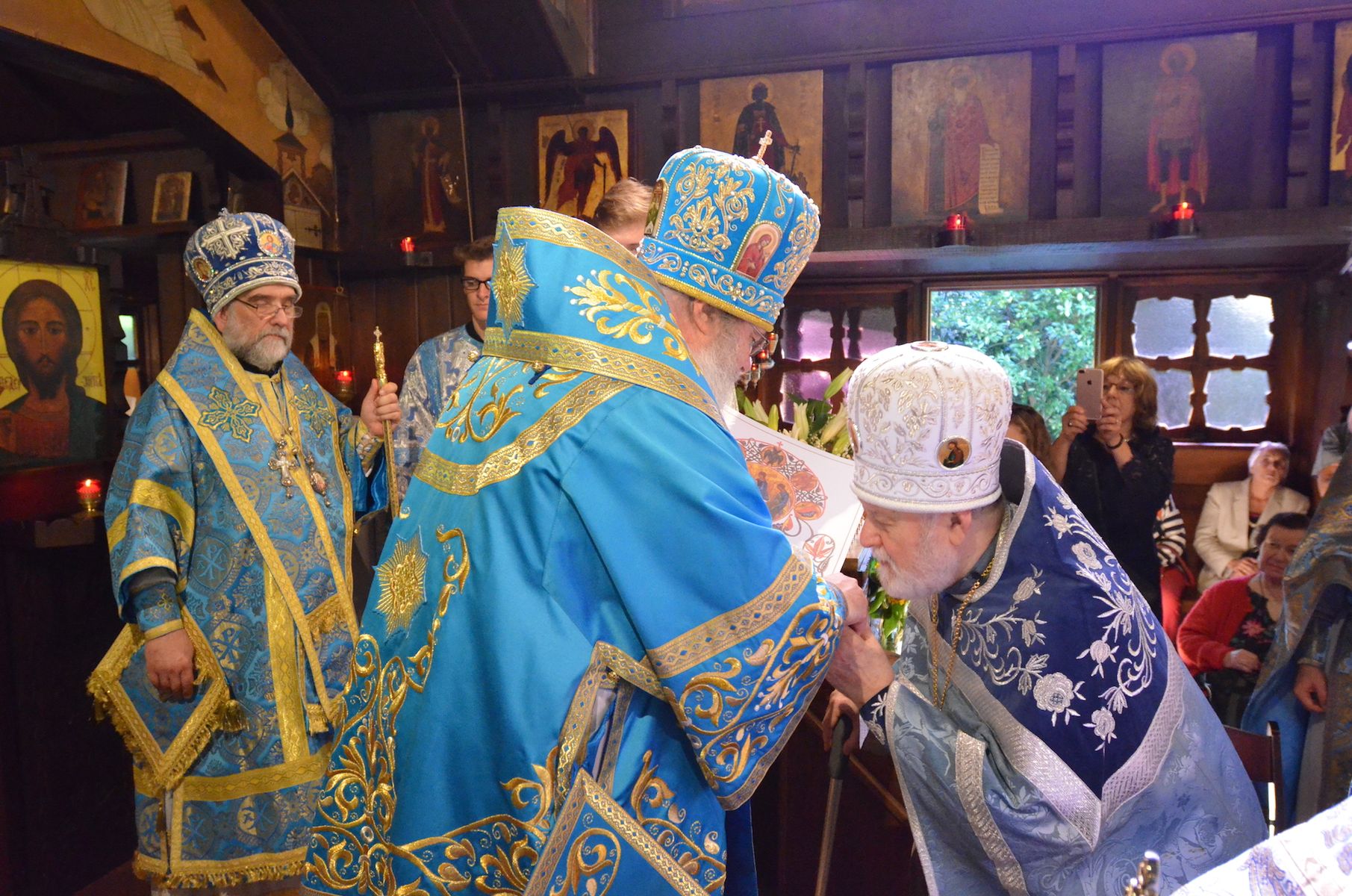
After the Tomos of Autocephaly was granted to the Orthodox Church in America in 1970, a painful time of division and litigation ensued in the parish. The majority of parishioners opposed the autocephaly because the Tomos was granted by the Russian Orthodox Church (Moscow Patriarchate). A minority remained loyal to the OCA. In the end, the court ruled in favor of the OCA, confirming that the Metropolia established the parish in 1942, that the OCA is the successor Church body, that the Orthodox Church is a hierarchical church and that the Church of Our Lady of Kazan and its property by right continue within the OCA. Thereupon the majority of parishioners left the Church of Our Lady of Kazan to join the Russian Orthodox Outside of Russia.
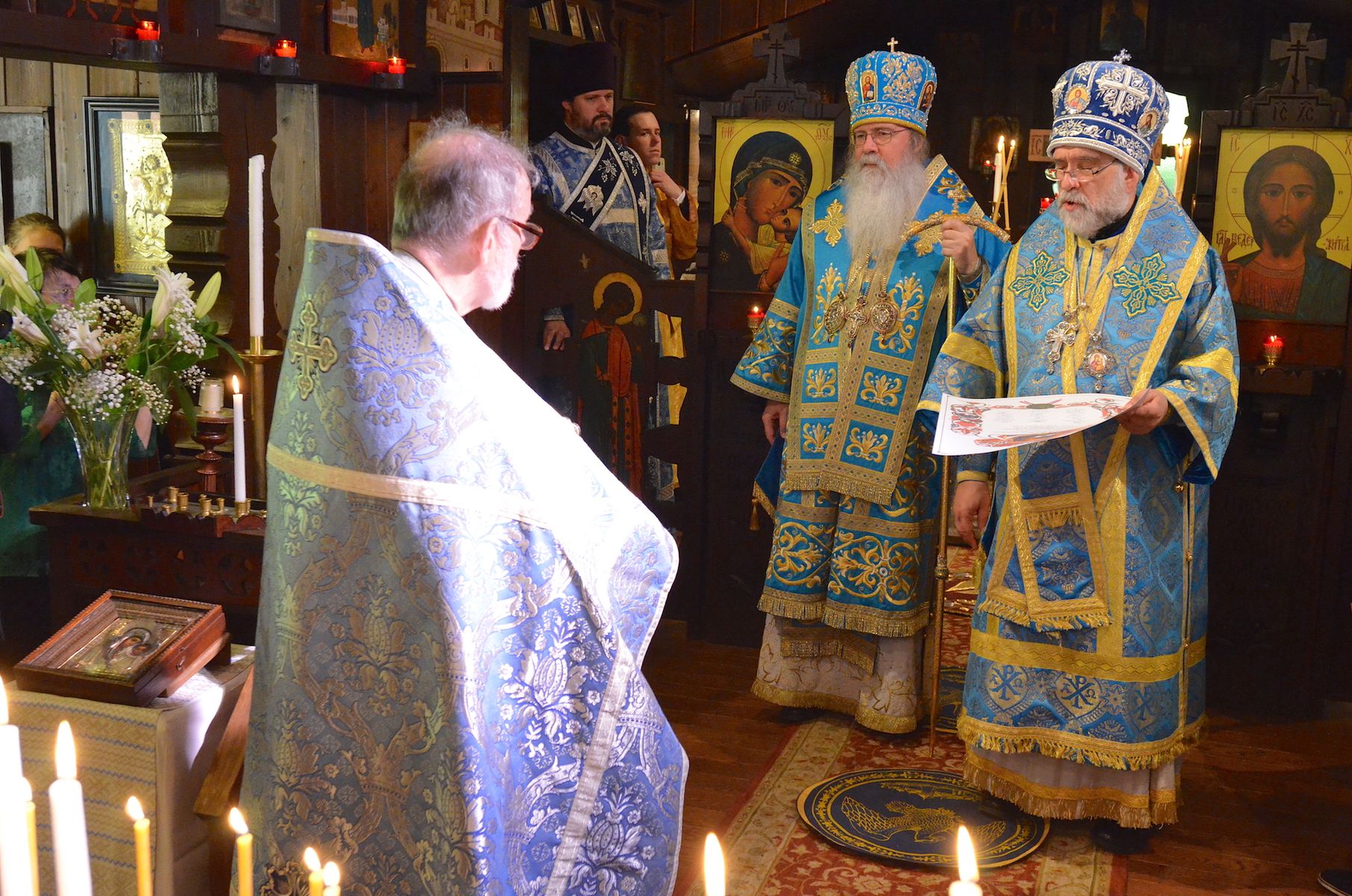
Father Leonid Kishkovsky was appointed rector in 1974, after the end of the court case. Together with the remaining parishioners, Father Leonid undertook the difficult work of renewing and rebuilding the parish membership. Today, the parish community reflects the OCA as a living mosaic of Orthodox Christians of different origins and backgrounds. As Father Leonid said at the 75th Anniversary lunch following the Liturgy on October 22, among the parishioners some are converts like His Beatitude Metropolitan Tikhon, some are of Russian or Ukrainian or Greek or Belorussiian or Georgian or Bulgarian or Romanian or Polish origin, all worshipping harmoniously as one parish community.
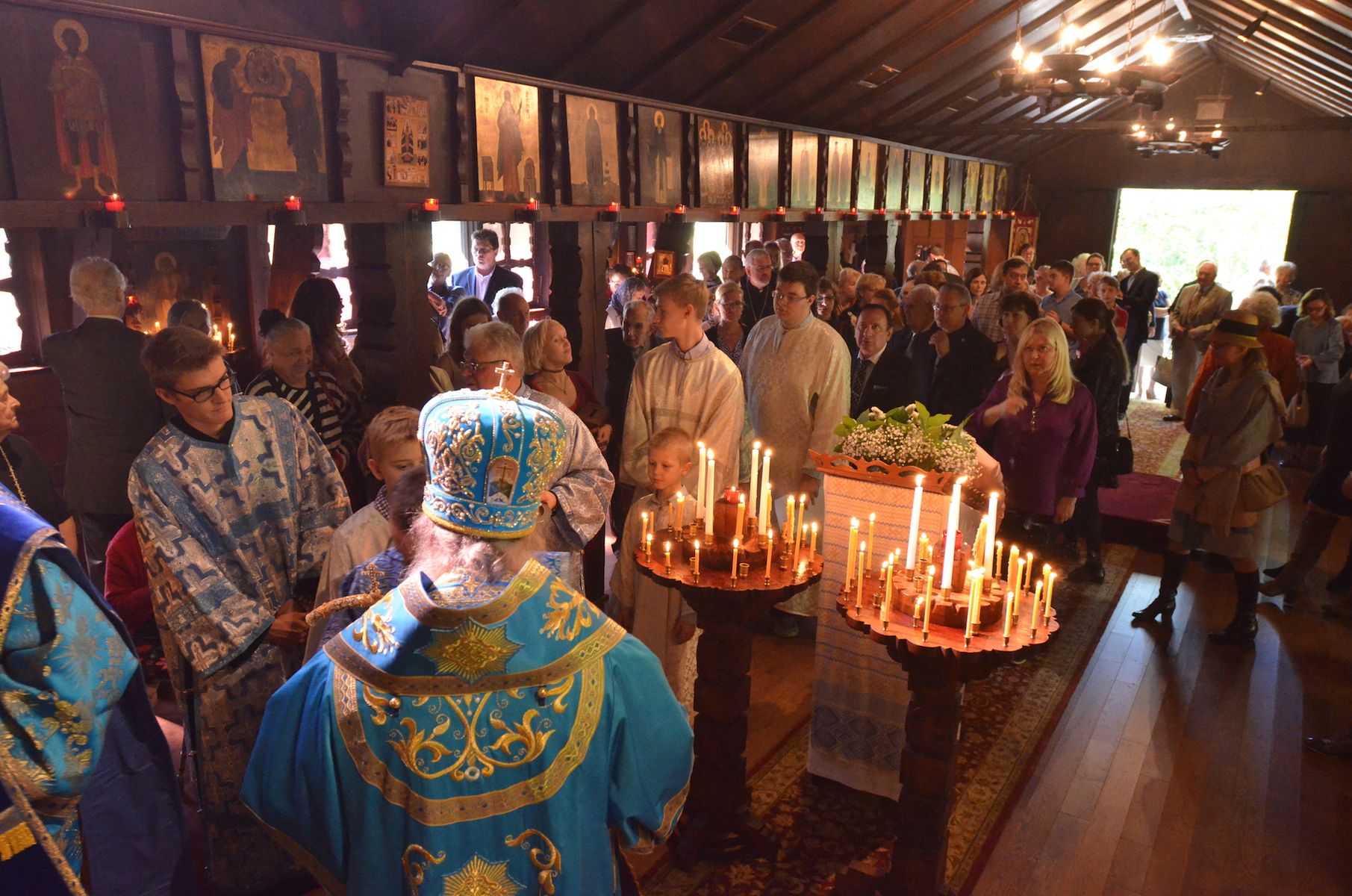

It is appropriate to close this historical sketch with some words about the church itself. The original chapel, situated in a small garage, was a modest building. The icon screen was made out of tree branches. The church which grew out of these humble beginnings is constructed in the style typical of a sixteenth century skete (small monastery) in northern Russia. The church’s icons are painted in the Byzantine style. The immense achievement of Boris Riaboff, its builder and architect, was his persistent preservation of that style both in external, structural terms, and in terms of the church’s icons, appointments, and furnishings. Through his interpretation of Russian rural ecclesiastical style, Mr. Riaboff was able to transform a garage into a unique, harmonious, and authentically Russian church.
In 2016, Our Lady of Kazan Church was placed on the National Register of Historic Places.
